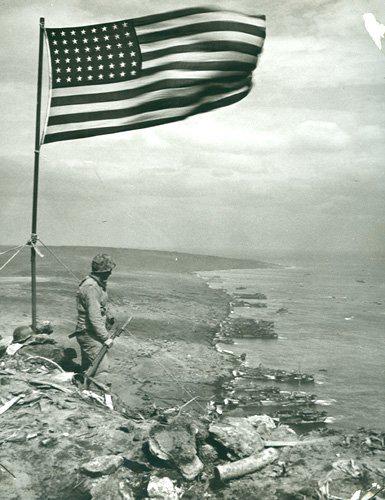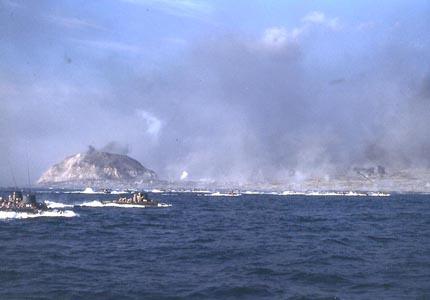On of the bloodiest battles to occur during the entirety of World War II happened on a small desolate island in the vast Pacific (16 Feb 1945 – 26 Mar 1945).

American Flag on Iwo Jima overlooking the landing beaches.
“Iwo Jima, which means sulfur island, was strategically important as an air base for fighter escorts supporting long-range bombing missions against mainland Japan. Because of the distance between mainland Japan and U.S. bases in the Mariana Islands, the capture of Iwo Jima would provide an emergency landing strip for crippled B-29s returning from bombing runs. The seizure of Iwo would allow for sea and air blockades, the ability to conduct intensive air bombardment and to destroy the enemy’s air and naval capabilities.The seizure of Iwo Jima was deemed necessary, but the prize would not come easy. The fighting that took place during the 36-day assault would be immortalized in the words of Commander, Pacific Fleet/Commander in Chief, Pacific Ocean Areas Admiral Chester W. Nimitz, who said, ‘Among the Americans who served on Iwo Island, uncommon valor was a common virtue.’
To the Japanese leadership, the capture of Iwo Jima meant the battle for Okinawa, and the invasion of Japan itself, was not far off.”
–Researched and written by 1st Lieutenant Kimberley J. Miller, Marine Corps History
Iwo Jima Amphibious Landing
Listen to the US Secretary of the Navy James Forrestal speak about the Battle of Iwo Jima (25 Feb 1945)